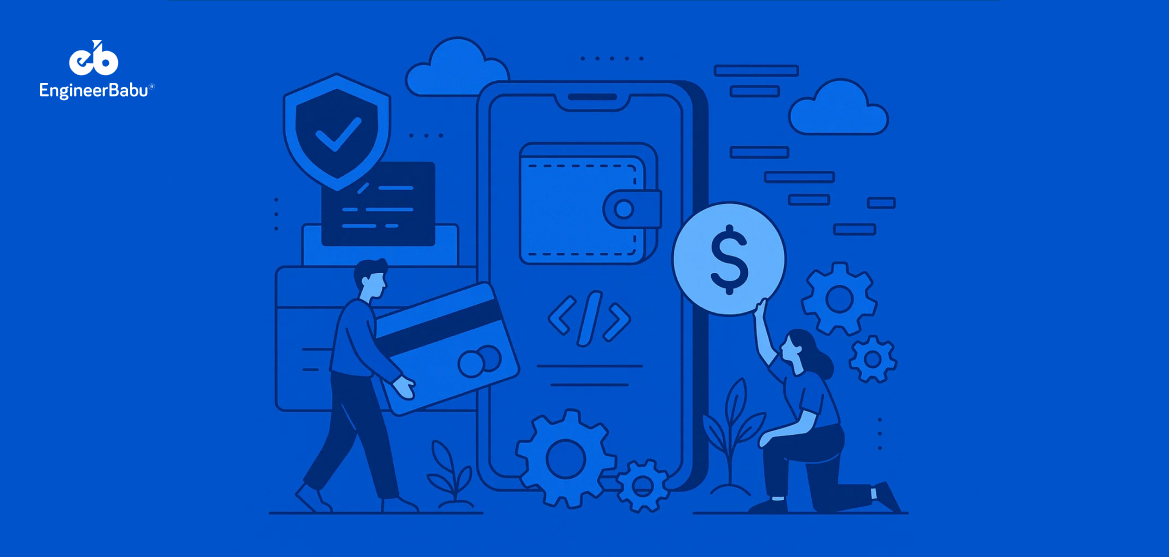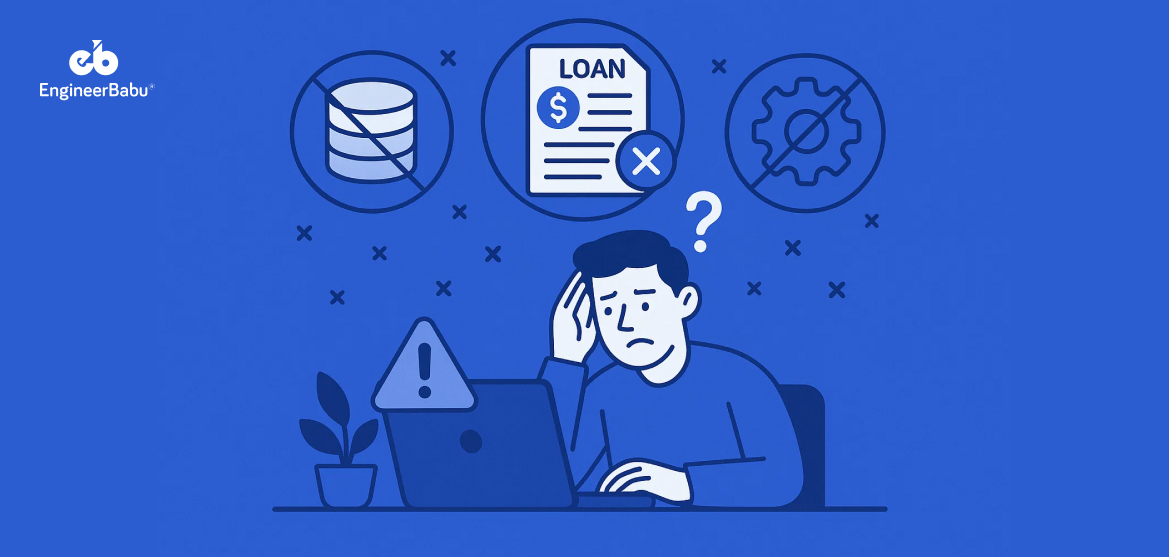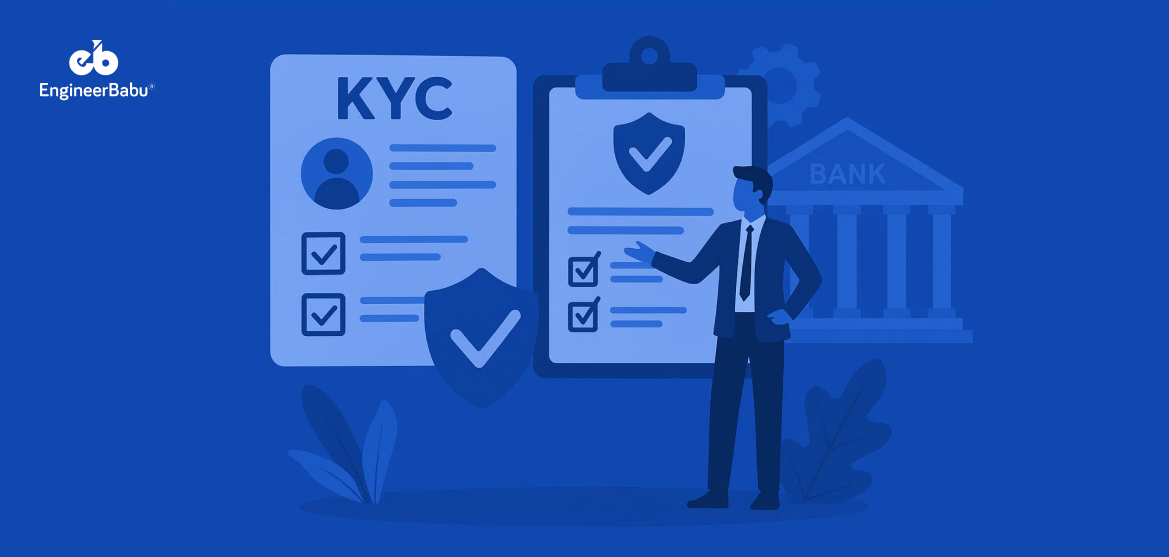Imagine this: You walk into a store, pick up your items, and walk out, no cash, no card swipe, no fumbling for change. Just a quick tap on your phone, and the payment is done. This is not some futuristic retail dream, it’s the convenience digital wallets have already brought into everyday life.
From Apple Pay in New York to Paytm in Delhi, mobile wallets are transforming how money moves. In fact, according to Nimble AppGenie, Global digital wallet transactions are projected to reach $12 trillion by 2026.
Therefore, businesses that still rely solely on traditional payment methods risk being left behind, not just in tech adoption, but in customer loyalty.
For founders, fintech innovators, and brands, creating a digital wallet app goes beyond storing payment credentials, it’s about delivering a secure, seamless, and scalable financial experience. This guide covers how to create a digital wallet that meets regulations and earns user trust. Let’s jump straight into it.
Understanding the Basics of a Digital Wallet
Before diving into development, it’s essential to understand what makes a digital wallet more than just a payment tool.
At its core, a digital wallet is a software-based system that securely stores users’ payment credentials like credit/debit cards, bank details, or even cryptocurrency keys. Moreover, it then enables fast, contactless transactions online and in-store.
Types of Digital Wallets
- Closed Wallets – Issued by a company for use only within its own ecosystem. For example, Amazon Pay can be used exclusively on Amazon and its partner services.
- Semi-Closed Wallets – Usable at multiple merchants, but only those partnered with the issuer. Paytm is a prime example in India.
- Open Wallets – Supported for transactions anywhere and capable of ATM withdrawals, like Google Pay or PayPal.
Why This Matters for Your Product
Choosing the right wallet type impacts everything, from compliance requirements to the scope of merchant integrations. For instance, an open wallet demands higher security and regulatory adherence but offers greater user adoption potential.
Step-by-Step Process: How to Create a Digital Wallet App
Ready to shift from fundamentals to execution? The next ten steps translate your vision into a production-ready wallet app, covering scope, model selection, tech stack, UX, compliance, security, launch, and scaling.
Skim the sequence end-to-end, then use it as a practical checklist as you plan, build, and grow.
1. Define the Purpose & Target Audience
When figuring out how to create a digital wallet, your first move is defining who it’s for and why they’d use it. Are you targeting retail shoppers, business teams, or niche groups like gamers or travellers?
This decision sets the tone for features, compliance requirements, and integration plans. Without a clear audience, your product risks becoming a generic payment app instead of a wallet people actively choose over competitors.
2. Choose the Right Digital Wallet Type
Closed, semi-closed, or open, the type you choose shapes everything from merchant integrations to regulatory obligations. Closed wallets suit a single brand’s ecosystem, semi-closed work within a partner network, and open wallets offer universal acceptance.
Knowing your business model’s reach helps decide the right path. This choice is central in creating a digital wallet that aligns with both customer expectations and the operational realities of your growth plan.
3. Select Technology Stack
Choosing the right tech stack ensures your wallet is scalable, secure, and easy to maintain. Backend options include NodeJS development for real-time performance, Java for stability, or Python for speed. React Native and Flutter offer cross-platform flexibility, while Swift helps in iOS app development.
Also, databases like PostgreSQL, MySQL, or MongoDB store transactions reliably. The right stack is a silent yet critical factor in how to create a digital wallet that stands the test of time and scale.
4. UI/UX Design
Your interface is where trust and usability meet. An intuitive layout with frictionless navigation assures that users can send, receive, and review payments quickly. So, use micro-interactions, clean typography, and responsive design to make the experience engaging.
Accessibility is just as important, so consider visually impaired or low-tech literacy users. While learning how to create a digital wallet, founders often overlook design, yet it’s this layer that keeps users loyal long after the first transaction.
5. Integrate Payment Gateways
Payment gateways are the lifeline between your wallet app and the financial ecosystem. Options like Stripe, Razorpay, PayPal, or custom banking APIs must align with your currency support, region coverage, and transaction volume.
Multiple gateways increase redundancy and choice, while integration speed impacts time-to-market. Also, smooth refunds, dispute resolution, and recurring payments aren’t extras, they’re essentials. Without strong gateways, even the best wallet design can fall short, making this step a cornerstone in the process of how to create a digital wallet.
6. Add Security Layers
Security is non-negotiable in fintech. Encryption protects sensitive information, tokenisation shields card data, and fraud detection systems monitor suspicious patterns. Moreover, multi-factor authentication, biometric verification, and real-time alerts further enhance trust.
These features must be architected into the core from day one, not bolted on later. Understanding security integration in a digital wallet means knowing that even one breach can destroy your brand, while proactive security earns lasting loyalty.
7. Regulatory Compliance
Regulations vary by region but share one goal: to protect consumers and prevent fraud. In India, RBI guidelines apply; in Europe, PSD2 compliance is critical, and PCI DSS compliance is required for card handling. You’ll need KYC/AML processes, secure data storage, and timely reporting mechanisms.
Failing here risks shutdowns, fines, or license loss. Building compliance into your architecture can help with smoother approvals and global scalability. This is where knowing how to create a digital wallet is not enough, but having knowledge about legal foresight and operational discipline is sufficient.
Learn more: Fintech Compliance Checklist
8. Testing & QA
Rigorous testing uncovers issues before users do. Simulate transaction spikes, failed payments, and poor connectivity to test resilience. Penetration testing ensures hackers can’t exploit vulnerabilities. Usability tests confirm that navigation and features meet real-world expectations. Even minor glitches can erode trust in a financial product, so QA is not optional.
9. Deployment & Launch
Rolling out your wallet isn’t just pushing it to app stores. It requires backend readiness, payment gateway activation, and customer onboarding materials. Soft-launching to a small audience allows for last-minute tweaks before a public release.
Also, a coordinated marketing push combined with user education like tutorials, FAQs, and responsive support can make the difference between a quiet launch and market buzz.
10. Post-Launch Support & Scaling
Once live, your wallet needs constant care. Monitor feedback, analyse transaction trends, and release updates to address security, performance, and user-requested features. Scaling infrastructure in line with demand prevents downtime during high usage.
Continuous innovation keeps you ahead of competitors. In essence, mastering how to create a digital wallet doesn’t end at launch; it’s an ongoing cycle of improvement, security reinforcement, and strategic scaling.
Conclusion
Creating a secure, user-friendly, and scalable digital wallet app requires far more than writing code, it’s a blend of strategic planning, compliance awareness, user experience design, and robust technology choices.
From defining your audience to post-launch scaling, every stage demands attention to detail and an understanding of the financial ecosystem you’re entering.
If you’re ready to bring your vision to life, EngineerBabu’s experienced fintech development team can help. Whether you’re a startup or an enterprise, we understand the nuances of payment systems, security, and compliance.
So, ready to build your digital wallet? Hire fintech developers at EngineerBabu and turn your idea into a market-ready product.
FAQs on How to Create a Digital Wallet App
1. How long does it take to develop a digital wallet app?
The timeline varies based on complexity, features, and integrations. A basic wallet can take 3–4 months, while an advanced, compliance-heavy solution might require 6–9 months, including design, development, testing, and regulatory approval.
2. What is the most secure way to store payment data in a digital wallet?
The most secure method is to use tokenisation along with end-to-end encryption. This ensures sensitive data like card numbers are never stored directly, reducing the risk of theft or breaches.
3. Do I need a licence to launch a digital wallet app?
In most countries, yes. You may need a payment licence, e-money licence, or similar authorisation from regulatory bodies. Requirements depend on the type of wallet (closed, semi-closed, or open) and the jurisdictions you operate in.
4. Can a digital wallet support multiple currencies and cryptocurrencies?
Yes, by integrating with the right payment gateways and APIs, you can support multiple fiat currencies and even cryptocurrencies. However, each addition may require extra compliance checks.
5. How much does it cost to create a digital wallet app?
Costs depend on scope, features, security requirements, and the tech stack. A simple wallet might cost less, while a complex fintech-grade solution with advanced security, multi-currency support, and compliance measures could cost huge. It’s always better to consult professionals for pricing.
6. What are the best fintech APIs to use for a digital wallet?
The best fintech APIs depend on your wallet’s functionality and region. For payments, options like Stripe, Razorpay, and Adyen are widely used. For KYC and compliance, tools like Onfido and Trulioo are reliable. Currency exchange APIs such as Open Exchange Rates or Currencylayer help if you’re supporting multiple currencies.




